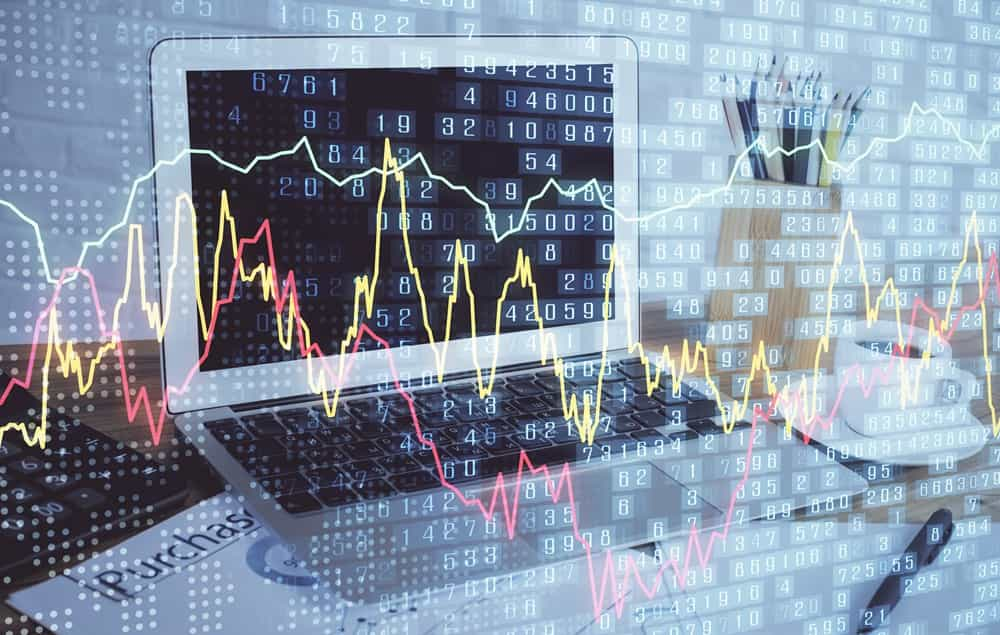The Federal Reserve May Do the Unthinkable, and It Could Drag the Stock Market Down in 2025
- Gold remains bid as lack of Fed clarity and geopolitical frictions persist
- U.S. November Nonfarm Payrolls: What Does the Rare "Weak Jobs, Strong Economy" Mix Mean for U.S. Equities?
- Tesla Stock Hits Record High as Robotaxi Tests Ignite Market. Why Is Goldman Sachs Pouring Cold Water on Tesla?
- U.S. November CPI: How Will Inflation Fluctuations Transmit to US Stocks? Tariffs Are the Key!
- AUD/USD remains depressed below mid-0.6600s; downside seems limited ahead of US NFP report
- December Santa Claus Rally: New highs in sight for US and European stocks?

The S&P 500 (SNPINDEX: ^GSPC) has advanced 27% in the past year. Those stock market gains were driven in part by expectations that the Federal Reserve will keep cutting interest rates. Lower rates boost the economy by encouraging spending, and higher rates slow the economy by discouraging spending.
Officials started cutting the federal funds rate in September, and the market expects the cutting to last through 2025. CME Group's FedWatch tool, which uses prices from the futures market to track the odds of changes in the federal funds rate, shows the most likely scenario as a single quarter-point rate cut in 2025.
Start Your Mornings Smarter! Wake up with Breakfast news in your inbox every market day.
Importantly, the FedWatch tool currently puts the probability of a rate increase in 2025 at zero. But the market may be misjudging the situation. Recent economic trends suggest Federal Reserve officials could indeed do the unthinkable and pivot back to rate increases this year. Here's what investors should know.
The economy is stronger and inflation is stickier than the Federal Reserve anticipated
The members of the Federal Open Market Committee (FOMC) meet eight times per year to adjust their stance on monetary policy. Officials make decisions based on economic data such as gross domestic product (GDP), unemployment, and inflation. The 2025 projections published at the September meeting are as follows:
GDP growth: 2%.
Unemployment: 4.4%.
Inflation: 2.1%.
Fed officials signaled four rate cuts at the September meeting. But the economy is stronger than anticipated, and inflation is stickier. So policymakers revised their outlook at the December meeting, such that they now expect two quarter-point cuts in 2025. They also updated their 2025 economic projections, as follows:
GDP growth: 2.1%.
Unemployment: 4.3%.
Inflation: 2.5%.
To summarize, the Federal Reserve has already lowered by 50% the number of anticipated interest rate cuts in 2025. It was four in September, but that number dropped to two at the December meeting. Policymakers may revise that number lower if their economic projections once again prove incorrect.
For instance, if GDP increases faster than anticipated, while unemployment remains lower and inflation trends higher than the consensus, Fed officials would have good reason to pivot back to interest rate increases this year.
The S&P 500 has historically performed well following the first rate cut in a cycle
Since 1994, the Federal Reserve has initiated six rate-increase cycles. The following chart shows how the S&P 500, an index widely regarded as the single best gauge for the overall U.S. stock market, performed during the 12-month period following the first rate increase during those six cycles.
First Rate Increase | S&P 500 Return 12-Month Return |
|---|---|
February 1994 | 2% |
March 1997 | 40% |
June 1999 | 6% |
June 2004 | 4% |
December 2015 | 9% |
March 2022 | (9%) |
Average | 9% |
Data source: Trading Economics, YCharts. Note: Returns exclude dividend payments.
The S&P 500 since 1994 has returned an average of 9% over the 12-month period following the first rate increase in a cycle. For context, the index returned 8.6% annually over the entire period, meaning it actually performed a little better following the onset of a new cycle of increases.
It should be noted, however, that the preceding table probably gives a falsely rosy impression of the situation. The forward-looking nature of the stock market means investors would price in the possibility of higher rates before the Federal Reserve started raising rates.
For instance, if the next updates concerning GDP, unemployment, and prices show a more robust economy and stickier inflation than the FOMC projected, the market will probably begin thinking about rate increases.
In that scenario, the S&P 500 would probably decline, possibly sharply, as the market reset its expectations concerning monetary policy. That's because higher rates suppress economic growth, and the stock market is a reflection of the economy. Investors should mentally prepare themselves for that possibility.
One smart move to make now is building a cash position. Investors with extra capital in their portfolios will be able to pounce on buying opportunities created by future market corrections. Another smart move to make is reducing positions that have become uncomfortably large. In other words, investors nervous about having too much money in a single stock should consider selling a few shares to rightsize the position.
Don’t miss this second chance at a potentially lucrative opportunity
Ever feel like you missed the boat in buying the most successful stocks? Then you’ll want to hear this.
On rare occasions, our expert team of analysts issues a “Double Down” stock recommendation for companies that they think are about to pop. If you’re worried you’ve already missed your chance to invest, now is the best time to buy before it’s too late. And the numbers speak for themselves:
Nvidia: if you invested $1,000 when we doubled down in 2009, you’d have $387,474!*
Apple: if you invested $1,000 when we doubled down in 2008, you’d have $46,399!*
Netflix: if you invested $1,000 when we doubled down in 2004, you’d have $475,542!*
Right now, we’re issuing “Double Down” alerts for three incredible companies, and there may not be another chance like this anytime soon.
*Stock Advisor returns as of January 6, 2025
Trevor Jennewine has no position in any of the stocks mentioned. The Motley Fool recommends CME Group. The Motley Fool has a disclosure policy.
Read more
* The content presented above, whether from a third party or not, is considered as general advice only. This article should not be construed as containing investment advice, investment recommendations, an offer of or solicitation for any transactions in financial instruments.

